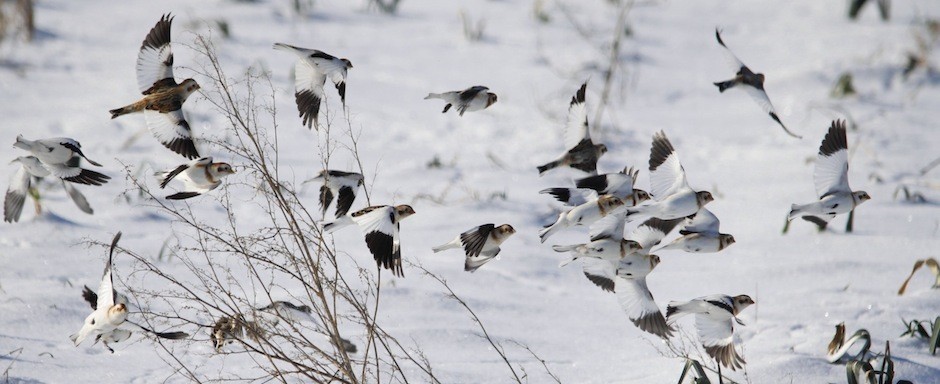The saga of Eddie the Cowbird continued into today……Lauren took a large batch of cowbirds to Western yesterday – 42 to be exact. One of these of course was Eddie with the orange leg band. At 4:27 PM she released him. At 10:30 this morning I found him feeding vigorously in a ground trap in the Ruthven parking lot!! So after weighing him I just let him go….no more trips to Western. He’s proven that Ruthven is the place to be for him.

Lauren Witterick from Western capturing cowbirds in the holding cage for transport to Western. -L. Witterick
We had another slow day (although we encountered/saw 51 species). Hopefully the unsettled weather forecast for the next couple of days will bring them down and we can get better catches.
Photographer Gail MacLellan has a penchant for insects, especially insects with an aquatic stage. She was able to get some great pictures of the larval stage of midges in the ponds/sloughs at Ruthven. Midges are a very important food source for early-migrating insectivores, especially swallows.
Here’s her comments on them:
Similar to mosquitos, midges lay their eggs in water. The larvae can be found in quiet waters, as in the vernal ponds at Ruthven.
Obviously abundant, as proven by the clouds of midges found in the area, the larvae themselves can be difficult to find. The larvae burrow through the pond floor into the muds and need not come up for oxygen as many other aquatic larvae do.
The early swarms visible in the spring are made up from larvae that have survived the entire winter within the pond sediment
Banded 15:
1 American Robin
2 Northern Cardinals
2 American Tree Sparrows
1 Field Sparrow
1 White-throated Sparrow
5 Brown=headed Cowbirds
2 American Goldfinches
ET’s: 51 spp>
Rick
Fern Hill – Burlington:
Slow day…Banded 4 birds of 3 species:
1 Chipping Sparrow
1 White-throated Sparrow
2 Red-winged Blackbirds
ET’s: 31 spp.
Janice











